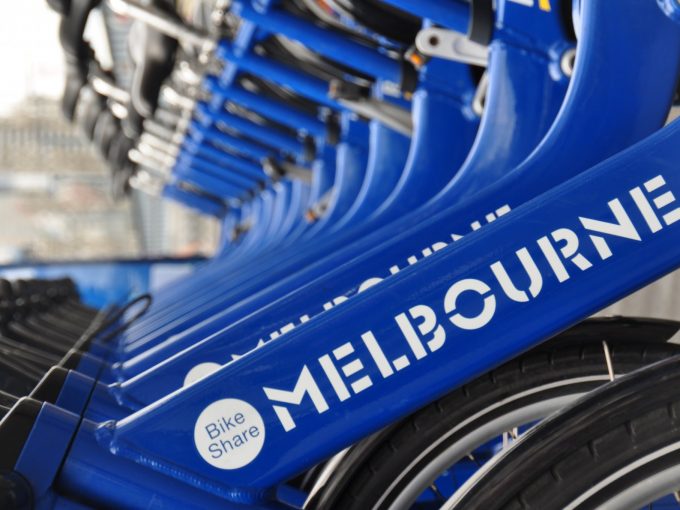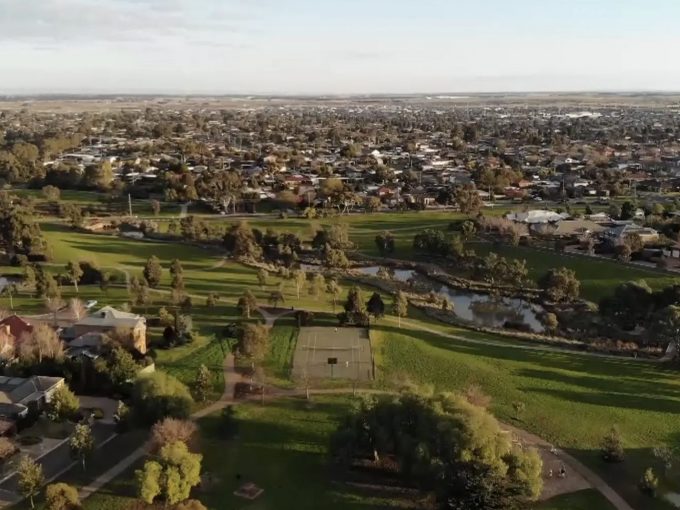More than 75% of the population of Australia’s largest cities continue to live in suburbs. The implications include reduced opportunities for physical activity, social interaction, access to public transport & high motor vehicle dependency.
Authors: Billie Giles Corti, Hannah Badland, Paula Hooper, Anna Timperio, Takemi Sugiyama and Sarah Foster
The design of the built environment can increase daily physical activity levels by increasing the opportunities to make healthy and active lifestyle choices.
However, motor vehicle-oriented land-use and transport policies in cities are contributing to global epidemics of non-communicable diseases and injuries. The health impacts create an imperative to make use of research evidence to move city planning and transport policies in directions that are health promoting.
Urban design and planning that considers health, in both greenfield and infill/retrofit development, can ensure increased opportunities for regular physical activity. This includes walking, cycling and public transport use, as well as access to recreational physical activity, sports and even community gardening.
Furthermore,
- for decades, concern has been growing about the unsustainability of post-war planning principles adopted in Australia, with segregated land use, disconnected streets, and low residential density suburbs: more than three-quarters of the population of Australia’s largest cities continue to live in suburbs. The implications for this type of development include reduced opportunities for physical activity, social interaction, access to public transport, as well as high motor vehicle dependency. These settlement patterns do not support active living choices and are also likely to be negatively impacted by changing environmental conditions linked to climate change, global warming, energy and food insecurity
- the importance of built environments to Australian population health is underlined by the high proportions of Australians who live in urban environments. Currently, over 85 per cent of Australians live in urban areas and nearly 70 per cent in the capital cities
- the Australian Parliament has recognised the importance of built environment planning in the context of population growth with Building Up & Moving Out, Inquiry into the Australian Government’s role in the development of cities. This was informed by Planning Institute of Australia (PIA)’s Through the lens: The tipping point
- emphasising urban resilience, through inclusive, safe and sustainable design is critical to addressing climate change. Also, the national and international uptake of renewable energy can also help propel a required energy efficiency mode-shift toward more public transport and active transport modes, and
- creating opportunities to lead more active, healthier, lifestyles relies on good planning and design as well as the timely provision on infrastructure in both new and existing communities.
Planning for health and wellbeing: built environment design considerations
- ensuring that the design of streets and public space prioritises the needs of people over motor vehicles. About 80% of the public realm of a city is made up of roads. Streets should be planned and designed according to their role as a “place” as well as their role in “movement”. As a place, a street is a destination in its own right and the design should consider the needs of people and active travel over car use
- higher levels of active travel, including walking for transport are found in ‘walkable’ neighbourhoods, with higher-density mixed-use zoning, connected street networks and access to public transport, and a balance of jobs to housing. Creating pedestrian-friendly streets has also been shown to be good for supporting local economies
- recreational walking is associated with the presence, proximity and quality of green open space. The presence of trees encourages people to walk for both exercise and transport and is associated with reduced incidence of heart attack and type 2 diabetes
- providing diverse housing in walkable environments can help older adults to ‘age in place’. Safe neighbourhoods with connected street networks and local shops, services and recreational facilities are associated with more walking in older adults and may protect against a decline in physical activity over time. Physical activity can help people maintain independence, recover from illness and reduce their risk of disease at all stages of life. As people age, physical fitness can have a major impact on wellbeing
- optimising neighbourhood walkability is desirable inbuilt environments. However, due consideration is required to minimise increased exposure to traffic related air pollution, which increases the risk of several acute and chronic diseases, including cardiovascular disease
- lower density development is associated with lower levels of walking for transport which is likely to contribute to poorer cardiovascular health outcomes. Living in more walkable neighbourhoods is associated with lower cardiovascular disease risk factors in men
- children are more likely to be physically active in more walkable neighbourhoods with access to recreation facilities close by, and to walk to school in neighbourhoods with connected street networks, low traffic speeds and volume. For adolescents, physical activity is associated with higher land-use mix and residential density. Having access to a range of local recreational destinations also appears to limit sedentary behaviour in young people
- evidence suggests that lack of personal safety can restrict adults’ walking and their children’s independent mobility. Lower speeds will improve liveability, improve road safety and contribute to increased rates of walking and cycling
- there appears to be growing consumer demand for more walkable neighbourhoods. This increasing demand is across a wide range of age groups and sections of society: from younger people who increasingly cannot afford to run a private vehicle, and/or prefer not to have private vehicles as they opt for active travel and/or public transport; through to older people who require facilities and services to be within walking distance to enable continued access and interaction int o older age
- when community facilities, such as schools, sport and recreation facilities, are all located near to homes and each other – and ideally within cycling or walking distance – it enhances opportunities for physical activity, wellbeing, sports participation, community interaction and social cohesion
- the relationship between food and health can be improved through planning and design. At the local level, this means ensuring healthy food options are available within walking distance of houses, as well as in schools and workplaces. On a broader social level, improving transport and accessibility to healthy food options promotes healthy eating, particularly to the disadvantaged
- the physical characteristics of an environment can support or inhibit a sense of place. Effective placemaking considers the uses, activities, comfort and sociability of a space. Furthermore, social connection and enjoyment of a space can be enhanced through inclusive, well connected, pedestrian friendly spaces.
What must be done?
- To reshape communities and neighbourhoods, leadership and action are required by government, civil society and the private sector. Integration of urban planning, urban design, and transport policies and practices is needed, at both local and regional levels.
- The following interventions are recommended to enable more active and liveable environments:
- implement policies that create communities and neighbourhoods that support active living, particularly walking
- ensure that the Federal Minister responsible for the Cities and Urban Development portfolio provides policy leadership on major cities, urban development and transport planning that embeds principles of active living
- support continued federal funding to local governments to maintain and enhance community infrastructure that promotes physical activity
- integrate urban transport and infrastructure planning to achieve compact, liveable neighbourhoods well serviced by public transport, walking and cycling and other social infrastructure (as advocated by PIA’s call for a National Settlement Strategy)
- ensure planning and design for health and wellbeing is prioritised as a primary objective in all levels of planning for the built environment including National (Federal, Commonwealth), State/Territory and Local
- require major road upgrades to incorporate landscaping and tree canopy cover along pedestrian paths and at crossing points
- integrate healthy planning principles in urban planning, design and development policies, codes and regulations that support people across the life course
- develop policies, standards and planning codes that ensure residents have access to a range of quality open spaces for both active and passive recreation within walking distance of homes, accessible by pedestrian-friendly routes
- require health and environmental impact assessments be undertaken on larger-scale urban and transport planning developments and policies
- introduce financial incentives and measures to restrict parking and motor vehicle use to promote walking and cycling and reduce congestion
- introduce minimum net-density (dwellings per hectare) thresholds in suburban developments to create compact mixed-use neighbourhoods that promote pedestrian and bicycle-friendly environments and reduce car dependency, as well as increase the viability and accessibility of local businesses, public transport and local amenities. Heart Foundation guidance Does Density Matter? provides further information on density and design
- ensure higher density developments are colocated with frequent public transport, and activity centres supporting a diversity of uses, job, services and high-quality public open spaces. Additional amenity makes density work and enhances community acceptance
- apply sustainable urban mobility planning concepts in cities to satisfy mobility needs, improve safety and security, reduce air and noise pollution and enhance the quality of the built environment and quality of life for its citizens
- prioritise infill development to relieve pressure on surrounding rural land whilst ensuring there is enough urban green space, as this is important to residential wellbeing
- where greenfield sites are developed in suburban, urban edge locations these must include connections to existing neighbourhoods with established facilities and centres with public transport and linked networks of walking and cycling routes. New communities must include adequate provision of community facilities and public open space
- establish the economic benefit of good design interventions, by considering the health value in addition to financial outlays. One of the ways to measure the impact of investment is with the Health Economic Assessment Tool (HEAT) for walking and cycling. This tool was developed by the World Health Organization to help organisations monetise the health benefits of reduced mortality gained by increases in walking and cycling
- Australian data shows that residents in disadvantaged, rural and remote regions have lower levels of physical activity. These areas, including remote and Aboriginal and Torres Strait Islander communities, should be prioritised in funding of built environment solutions that meet community needs and meet diverse geographic and cultural requirements.
Plan, design, develop and retrofit neighbourhoods to include the following features:
- mixed land use – provide local access to a mix of shops, schools, parks and services
- encourage medium-higher densities – increase density around activity centres and public transport hubs to encourage public transport access, walking and cycling
- urban design – design neighbourhoods with high levels of street connectivity, diverse lot sizes and dwelling types, access to amenities and increased natural surveillance
- careful siting of key community facilities to create walkable communities – locate schools, public transport interchanges, shops, services and retirement housing centrally in the heart of communities within connected street networks with low traffic volumes and, in the case of retirement housing, high levels of access to shops and services
- personal safety – enhance natural surveillance of streets and public open space from adjacent houses and businesses
- street design – create streets for people, prioritising access for pedestrians, cyclists and public transport over private vehicles. Good street design creates conditions for active travel including wide footpaths, safe crossings, cycle paths, seating, lighting, street trees for shade and visual amenity, and reduction of traffic speeds
- advocate for a 30km/hr speed limit for residential streets and in peak pedestrian areas, such as shopping precincts, schools and community facilities
- public open space – provide access to a hierarchy of high-quality functional public open space suitable for multiple user groups across the life course; design to enhance safety (natural surveillance from adjacent houses and business) and provide amenities to meet the needs of different user groups
- housing diversity – provide dwelling choices, through a range of housing and occupancy types, to meet the needs of a diverse community throughout members’ life stages
- healthy food – consider the planning and design of food environments, retail and promotion; production space, community engagement (e.g. links with education), transport infrastructure and availability of and access to healthy food outlets
- building design – buildings that incorporate opportunities for physical activity, within the building and as part of an active travel trip (e.g. start/end of journey facilities)
- sense of place – create spaces that acknowledge culture, history, environment, encourage use, activity and are destinations and focal points for community activity.
Implement social and community interventions that support the creation of healthier neighbourhoods:
- encourage programmes of activity to ensure use and activation of public open spaces, with events and activities to provide opportunities for physical activity, social engagement and participation
- develop, implement and evaluate tools and educational strategies, build capacity of built environment professionals to embed active living principles into their practice
- promptly remove litter and graffiti and repair damage through vandalism to enhance perceptions of safety.
Help individuals contribute to creating and choosing active neighbourhoods and communities:
- implement social marketing and advocacy initiatives to mobilise individuals to demand neighbourhood development that positively impacts on the community’s health
- educate consumers about the availability and importance of using the Heart Foundation’s neighbourhood walkability checklist, WalkScore, and other active-living tools when deciding where to live
- introduce a health-related liveability index for new developments to assist consumers to make informed choices when purchasing property. A systematic approach to city design can enhance health and sustainability through active transport and a move towards new urban mobility. Such an approach promises to be a powerful strategy for improvements in population health on a permanent basis.
This article was published with the permission of the Heart Foundation. The full version is available in the Heart Foundation’s Blueprint for an Active Australia.





